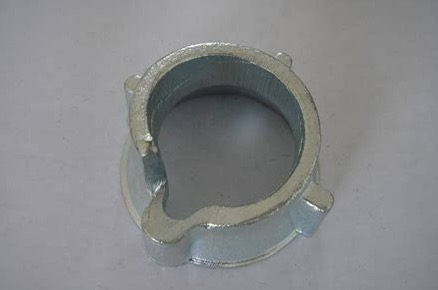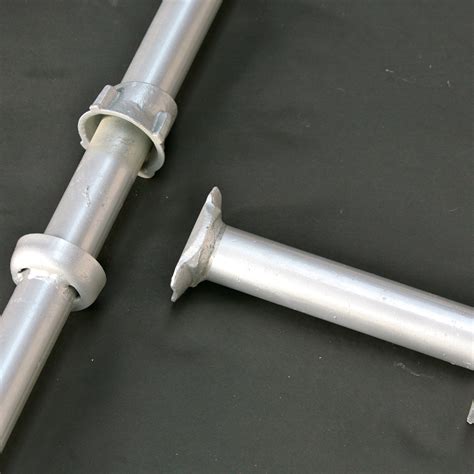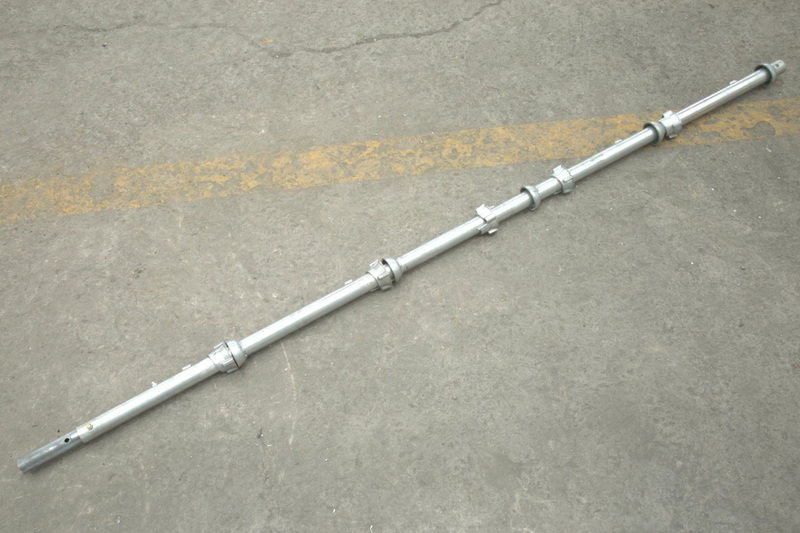Content Menu
● Introduction to Cuplock Scaffolding
● Key Components of Cuplock Scaffolding
● Assembly and Use of Cuplock Scaffolding
● Benefits of Cuplock Scaffolding Systems
● Applications of Cuplock Scaffolding
● Conclusion
● FAQ
>> 1. What are the main components of a cuplock scaffolding system?
>> 2. How does the cuplock system enhance safety?
>> 3. What are the benefits of using cuplock scaffolding?
>> 4. Can cuplock scaffolding be used for formwork?
>> 5. How does the cuplock system compare to traditional scaffolding?
● Citations:
Cuplock scaffolding systems are widely used in construction due to their modular design, ease of assembly, and versatility. These systems consist of several key components that work together to provide a safe and efficient working platform for various construction tasks. In this article, we will delve into the main components of a cuplock scaffolding system, their functions, and how they contribute to the overall structure.

Introduction to Cuplock Scaffolding
Cuplock scaffolding is a type of modular scaffolding that uses a unique circular node locking design. This design allows for the connection of multiple horizontal components to a single vertical standard, making it highly flexible and efficient for constructing complex scaffolding structures. The system is fully galvanized, ensuring durability and resistance to corrosion, which is crucial for outdoor construction environments.
Key Components of Cuplock Scaffolding
The cuplock scaffolding system includes several essential components:
1. Vertical Standards (Standards): These are the vertical tubes that form the backbone of the scaffolding structure. They are typically made from 40-millimeter niobium (NB) tubes with rotating top cups and fixed bottom cups placed at half-meter intervals. Each standard can hold up to four components, providing excellent flexibility in scaffolding design.
2. Horizontal Ledgers (Ledgers): These are horizontal tubes that connect to the cups on the vertical standards. They are crucial for distributing the load evenly across the scaffold and maintaining its structural integrity. Ledgers are made from similar materials as the standards and feature blade ends that easily lock into the cups.
3. Diagonal Braces: These provide additional support to the scaffolding structure by connecting the horizontal and vertical components diagonally. They are essential for enhancing the stability and rigidity of the scaffold.
4. Jack Base: This is the foundation of the scaffolding system, providing a stable base for the entire structure. Jack bases can be adjusted to ensure the scaffold is level on uneven ground.
5. Staircases: These allow workers to safely ascend and descend the scaffold. Staircases are an integral part of ensuring worker safety and efficiency.
6. Cuplock Fittings: These include various connectors and accessories used to assemble and secure the scaffolding components. They are designed to work seamlessly with the cuplock system's locking mechanism.
7. Intermediate Transoms: These are additional horizontal members placed between ledgers to provide extra support to the scaffolding structure, especially when using scaffold planks.
8. Cantilever Frames: These are specialized frames used to extend the working area beyond the edge of a structure, providing a cantilevered platform.

Assembly and Use of Cuplock Scaffolding
The assembly of a cuplock scaffolding system is relatively straightforward due to its modular design. Here's a simplified overview of the assembly process:
1. Base Preparation: Start by placing the jack bases at the required positions to ensure a stable foundation.
2. Erecting Standards: Place the vertical standards on each base plate.
3. Installing Ledgers: Fix the horizontal ledgers between the standards, ensuring they are level and securely locked into place.
4. Adding Diagonal Braces: Install diagonal braces to enhance stability.
5. Finalizing the Structure: Continue adding layers of standards and ledgers as needed, ensuring each layer is properly aligned and secured.
Benefits of Cuplock Scaffolding Systems
Cuplock scaffolding systems offer several advantages over traditional scaffolding methods:
- Flexibility: The modular design allows for easy customization to fit various construction needs.
- Efficiency: Quick assembly and disassembly save time and labor.
- Safety: The robust structure and secure locking mechanism ensure a safe working environment.
- Durability: Fully galvanized components resist corrosion, extending the lifespan of the scaffolding.
Applications of Cuplock Scaffolding
Cuplock scaffolding is versatile and can be used in a wide range of applications:
- Construction: For building access and supporting vertical loads.
- Maintenance: Ideal for maintenance work on tall structures.
- Formwork: Often used in concrete formwork for slabs and beams.
Conclusion
In conclusion, the cuplock scaffolding system is a reliable and efficient solution for various construction and maintenance tasks. Its modular design, combined with its ease of assembly and disassembly, makes it a preferred choice among contractors. Understanding the key components and their functions is crucial for ensuring safe and effective use of the system.

FAQ
1. What are the main components of a cuplock scaffolding system?
The main components include vertical standards, horizontal ledgers, diagonal braces, jack bases, staircases, cuplock fittings, intermediate transoms, and cantilever frames.
2. How does the cuplock system enhance safety?
The cuplock system enhances safety through its robust structure and secure locking mechanism, ensuring that all components are firmly in place, thus reducing the risk of accidents.
3. What are the benefits of using cuplock scaffolding?
Benefits include flexibility, efficiency in assembly and disassembly, safety, and durability due to its fully galvanized components.
4. Can cuplock scaffolding be used for formwork?
Yes, cuplock scaffolding is often used in formwork applications, especially for supporting concrete slabs and beams.
5. How does the cuplock system compare to traditional scaffolding?
The cuplock system is generally faster to assemble and disassemble, more flexible, and safer than traditional scaffolding systems.
Citations:
[1] https://jumplyscaffolding.com/what-is-cuplock-scaffolding/
[2] https://www.youtube.com/watch?v=fnJw0xLZE5s
[3] https://www.internationalscaffolding.com/projects/what-is-a-cuplock-scaffolding-system/
[4] https://primesteeltech.co.in/cuplock-scaffolding-systems-benefits-components-applications-explained.html
[5] https://www.youtube.com/watch?v=42kRVbNRFgY
[6] https://patents.google.com/patent/CN103921960A/en
[7] https://www.adtoscaffold.com/product/cuplock_scaffold.html
[8] https://www.youtube.com/watch?v=2FbwLFj1aFY
[9] https://www.sparsteel.com/blog/cuplock-scaffolding-types-uses-and-benefits/
[10] https://www.wm-scaffold.com/cup-lock-scaffold.html






















